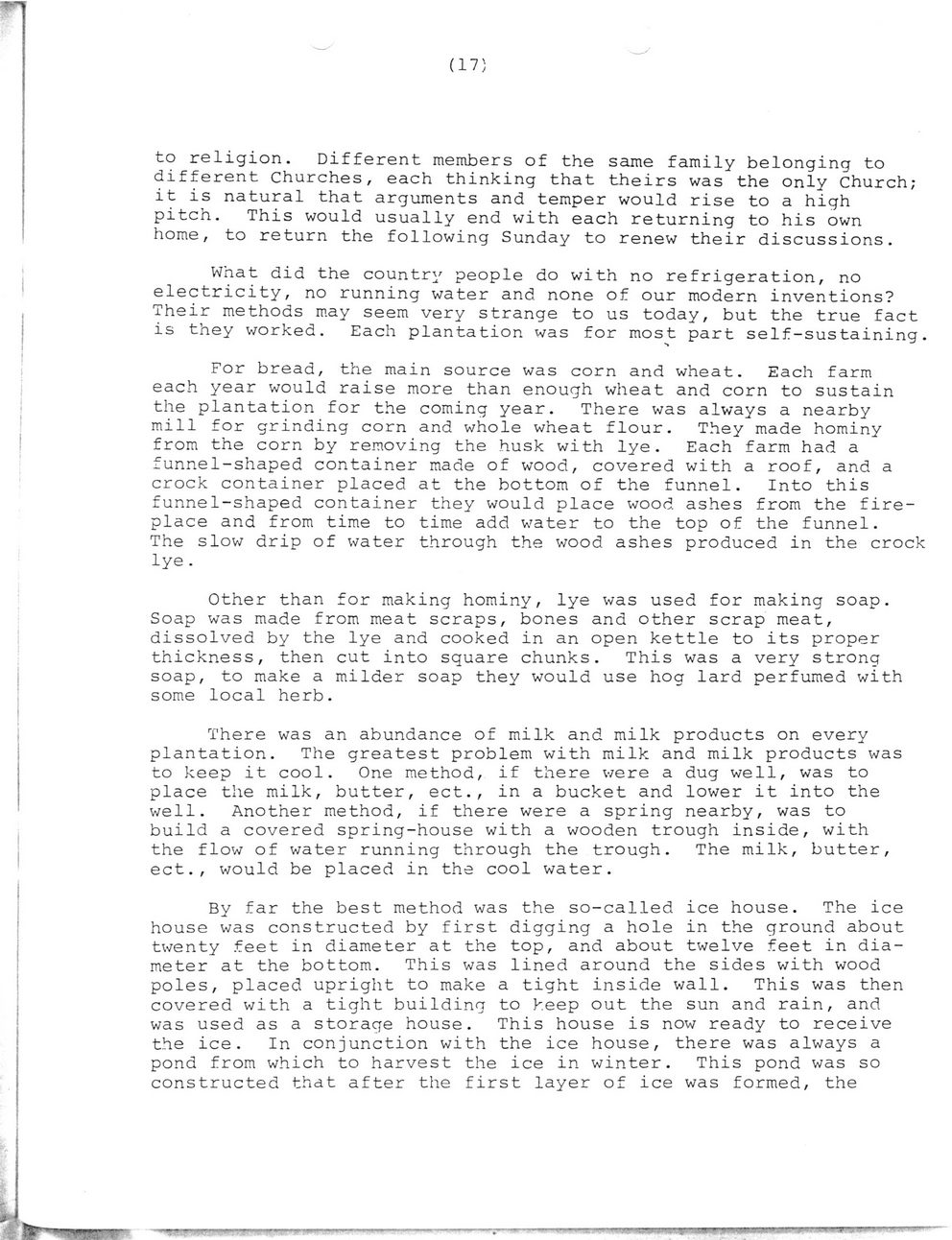This text was obtained via automated optical character recognition.
It has not been edited and may therefore contain several errors.
(17) to religion. Different members of the same family belonging to different Churches, each thinking that theirs was the only Church; it is natural that arguments and temper would rise to a high pitch. This would usually end with each returning to his own home, to return the following Sunday to renew their discussions. What did the country people do with no refrigeration, no electricity, no running water and none of our modern inventions? Their methods may seem very strange to us today, but the true fact is they worked. Each plantation was for most part self-sustaining. For bread, the main source was corn and wheat. Each farm each year would raise more than enough wheat and corn to sustain the plantation for the coming year. There was always a nearby mill for grinding corn and whole wheat flour. They made hominy from the corn by removing the husk with lye. Each farm had a funnel-shaped container made of wood, covered with a roof, and a crock container placed at the bottom of the funnel. Into this funnel-shaped container they would place wood ashes from the fireplace and from time to time add water to the top of the funnel. The slow drip of water through the wood ashes produced in the crock lye . Other than for making hominy, lye was used for making soap. Soap was made from meat scraps, bones and other scrap meat, dissolved by the lye and cooked in an open kettle to its proper thickness, then cut into square chunks. This was a very strong soap, to make a milder soap they would use hog lard perfumed with some local herb. There was an abundance of milk and milk products on every plantation. The greatest problem with milk and milk products was to keep it cool. One method, if there were a dug well, was to place the milk, butter, ect., in a bucket and lower it into the well. Another method, if there were a spring nearby, was to build a covered spring-house with a wooden trough inside, with the flow of water running through the trough. The milk, butter, ect., would be placed in the cool water. By far the best method was the so-called ice house. The ice house was constructed by first digging a hole in the ground about twenty feet in diameter at the top, and about twelve feet in diameter at the bottom. This was lined around the sides with wood poles, placed upright to make a tight inside wall. This was then covered with a tight building to keep out the sun and rain, and was used as a storage house. This house is now ready to receive the ice. In conjunction with the ice house, there was always a pond from which to harvest the ice in winter. This pond was so constructed that after the first layer of ice was formed, the

Carr, Hugh Turner My-First-80-Years-Aboard-The-Planet-Earth-025